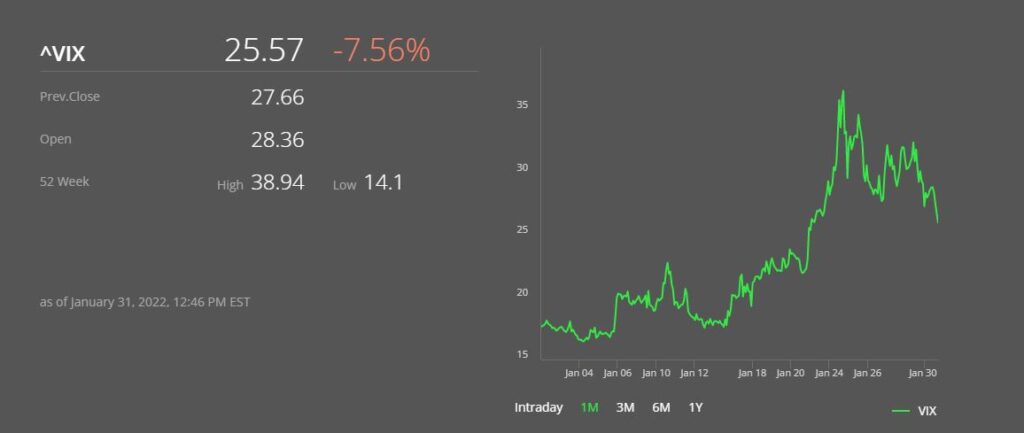
Volatility is Back
January 31, 2022
Last week we discussed the much greater volatility and uncertainty in the markets so far this year. I wanted to share a few more perspectives based on my experience of working in the investment markets for almost four decades.
Several clients have called recently seeking reassurance as the global markets went on their latest rollercoaster ride. In each conversation, we have discussed the harsh reality that ‘volatility’ is, in fact, the norm. The recent times of relative calm, with the market seemingly only headed in one direction, have lulled some investors into a false sense of security.
The S&P 500 is down almost 10% year to date. Is that unusual? Not really. If you look at data (excluding dividends) going back 42 years to 1980, you will find that the market has declined from the high in any given year as follows:
Over 20% 8 times (19%)
Between 10% and 20% 15 times (36%)
Less than 10% 19 times (45%)
Over this period, and again, not accounting for dividends, the S&P 500 was negative in only nine of those calendar years, or 21% of the time. By comparison, an investor in the S&P 500 would have seen a ‘within-year’ fall in market value of over 10% during 55% of those years.
Capital invested at the beginning of 1980 in the US large cap market has grown at an annual rate of just over 12% per year (including reinvested dividends). That means $100 invested in 1980 would be valued at around $12,500 in today’s dollars, not accounting for taxes. Of course, that kind of reward would only have been available for an investor who was patient, disciplined, and resistant to emotional reactions to market volatility. For this reason, we continue to emphasize that without commitment to a clear investment strategy, you have nothing and will likely be the victim of the Wall Street wolves.
Some ‘investors’ have a trading mindset. The fact is that there are very few successful traders. Even highly paid ‘active’ managers find it extremely difficult to beat passive investments. Trading provides excitement and a false sense of control and expertise, but as Warren Buffett says: “if you are looking for excitement, then go to Las Vegas.”
Wall Street thrives on “activity.” There is nothing quite like CNBC, Bloomberg TV, and Mad Money to get the adrenaline pumping. The entire apparatus is geared to stimulate buying and selling. The Warren Buffett philosophy of buying quality businesses and holding them forever is focused on making money for shareholders and investors, not some overpaid intermediary.
Is there more volatility to come? I am certain of that. How best to mitigate the impact of that volatility? Diversify – that is the one free lunch that is still available. The other piece of advice: if you can’t sleep at night, then sell some of your stocks and hold more cash. It may not make you the most money over time, but if you can enjoy your life and have sufficient capital, then a good night’s sleep is worth its weight in gold!
Nick Hoffman


